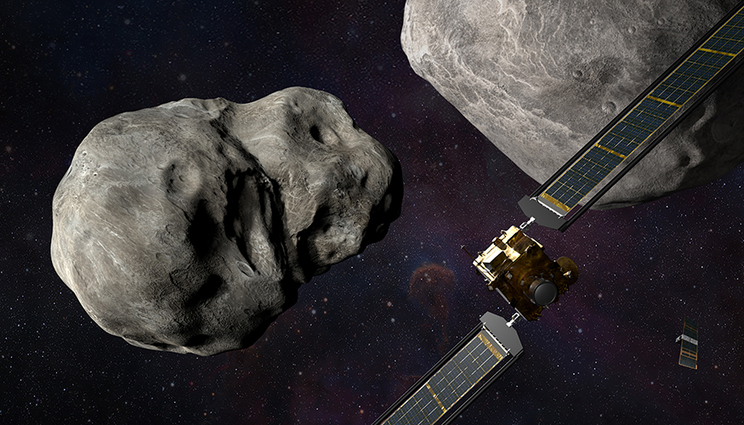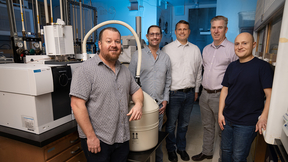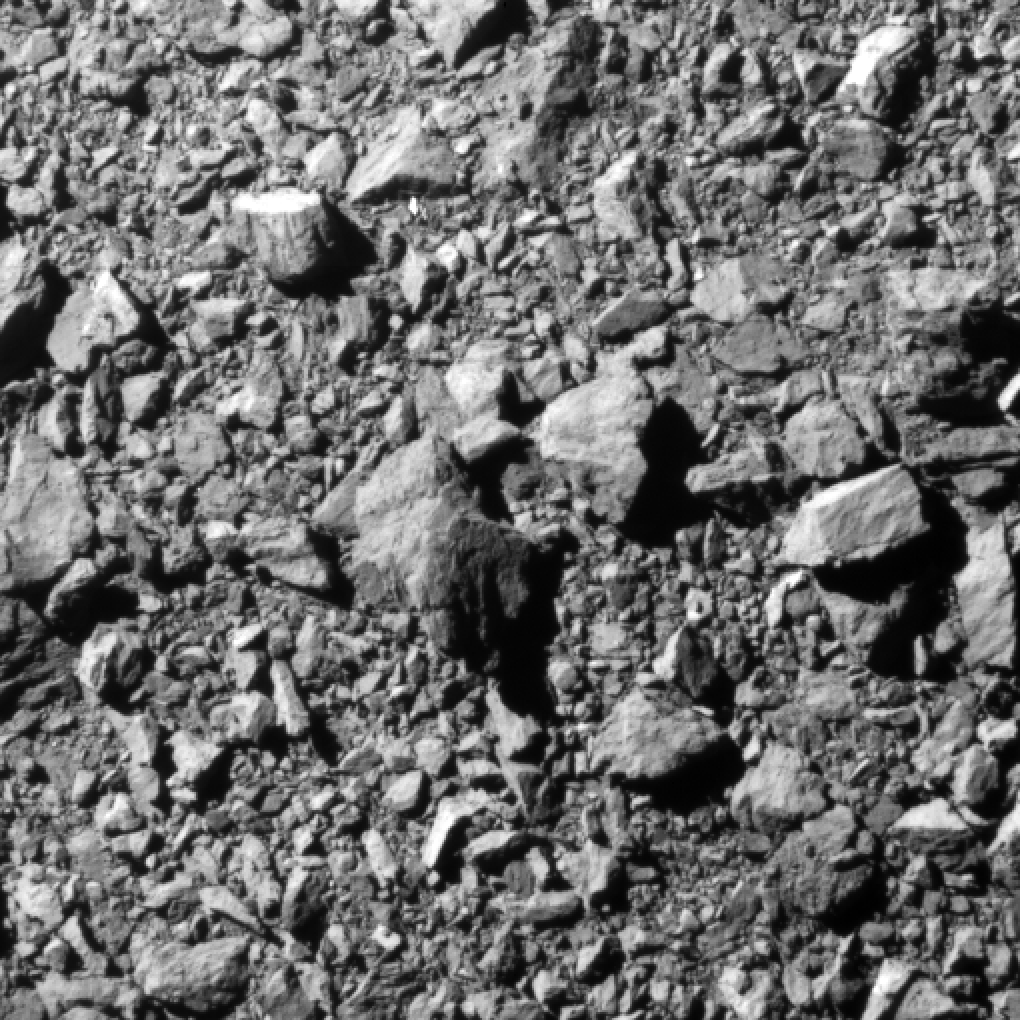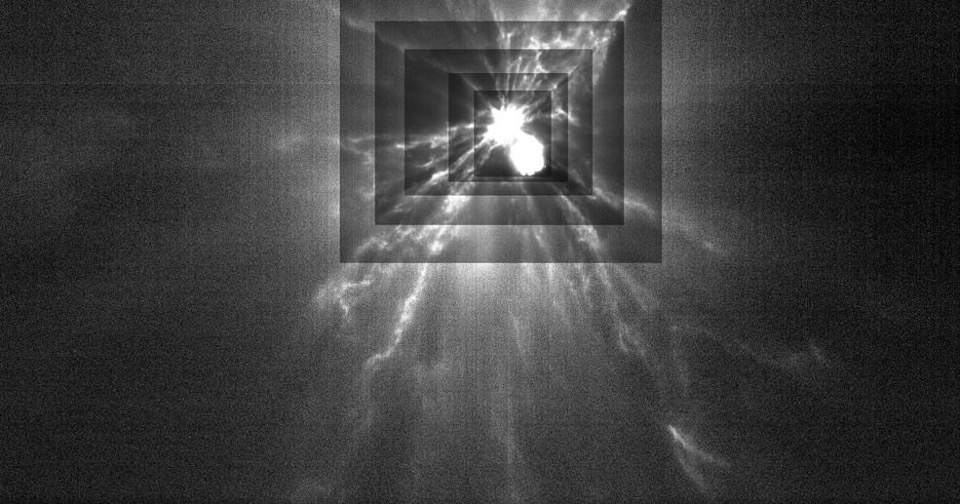Study looks at velocity impact to asteroid Dimorphos
 (Download Image)
(Download Image)
Illustration of NASA’s DART spacecraft and the Italian Space Agency’s (ASI) LICIACube prior to impact at the Didymos binary system. Image courtesy of NASA/Johns Hopkins Applied Physics Laboratory/Steve Gribben.
The first peer-reviewed results from NASA’s Double Asteroid Redirection Test (DART) mission were published Wednesday by Nature, including contributions from LLNL’s planetary defense team.
The DART spacecraft executed a successful hypervelocity impact of 150-meter asteroid Dimorphos on Sept. 26, 2022. Analysis by Earth-based telescopes determined that the impact successfully deflected Dimorphos, changing its orbital period around the larger asteroid, Didymos, by 32 minutes. While this achievement was announced by NASA in October 2022, these papers represent the first peer-reviewed scientific results from the mission.
The study is a first look both at the actual velocity imparted to Dimorphos as well as how much momentum researchers got from ejecta after the DART impact.
One of the papers, “Momentum Transfer from the DART Mission Kinetic Impact on Asteroid Dimorphos” (Cheng et al.), reveals that the change in velocity or “delta-v” delivered to Dimorphos by the DART impact was 2.7 +/- 0.1 mm/s. This delta-v is a critical piece of information for impact modelers, as they explore asteroid material properties that can produce results consistent with the DART experiment. LLNL’s team of impact modelers includes Mike Owen, Katie Kumamoto, Jason Pearl, Cody Raskin and Megan Syal.
Final full DRACO image of the DART impact site at Dimorphos, taken 1.818 seconds before the spacecraft’s collision. Image courtesy of NASA/Johns Hopkins University APL.
“For an asteroid deflection, we’re clearly very interested in knowing exactly how fast we could push the asteroid,” said Kumamoto, a co-author on the Cheng et al. paper. “The minimum we could expect from a kinetic impactor would be a direct transfer of momentum from the spacecraft to the asteroid, so the asteroid's velocity change would depend only on the asteroid's mass for a given scenario. But we get extra momentum from any ejecta created during the impact, which can let us push the asteroid faster.”
The multiplier on the initial spacecraft momentum is termed “Beta,” where Beta of 1.0 corresponds to no ejecta, and a Beta of 3.0, for instance, means the total momentum delivered was three times the initial momentum of the spacecraft.
LICIACube composite image of DART impact ejecta. Image Courtesy of NASA/Johns Hopkins University APL/Italian Space Agency“While the actual Beta for the DART impact depends upon the assumed bulk density for Dimorphos, for a density of 2.4 g/cm3, the calculated Beta is about 3.6, which is a great result, closer to the higher end of the 1 to 5 range predicted by the Impact Working Group’s sensitivity studies,” Syal said.
While the DART mission is a single data point on a single asteroid, this relatively large Beta means that a kinetic impactor could potentially be very effective in a real asteroid-impact emergency, depending on its size and the warning time, Syal said.
The DART Impact Working Group, including LLNL scientists, is now using the findings of this paper to explore possible material parameters for Dimorphos.
“We have material property data on so few asteroids, but it's important for working out what we might expect from ejecta behavior during a deflection,” Kumamoto said. “The velocity change for Dimorphos after the DART impact is a critical value for our models to reproduce.”
Neither Dimorphos nor Dydymos represented any hazard to Earth before or after DART’s controlled collision with Dimorphos, according to NASA.
----------------
Johns Hopkins Applied Physics Lab built and operated the DART spacecraft and manages the DART mission for NASA’s Planetary Defense Coordination Office as a project of the agency’s Planetary Missions Program Office. LICIACube is a project of the Italian Space Agency (ASI), carried out by Argotec.
Contact
 Paul Rhien
Paul Rhien
[email protected]
(925) 422-4206
Related Links
NatureTags
Space Science InstituteDefense
Science
Featured Articles









